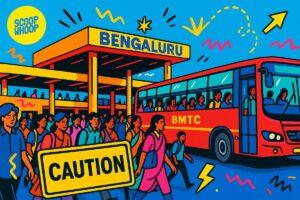What promised to be a noise-free and pollution-free Diwali for the Capital till 6pm, turned noisy, smoke-hazed and toxic as the evening progressed. The Supreme Court’s cracker ban had very little effect on Delhiites as they did what they have been doing for decades- burn mile-long ladis till the wee hours of the morning.
According to this TOI report, indicators of pollution monitoring stations in the Capital glowed red, indicating ‘very poor’ air quality as the volume of ultra fine particulates PM2.5 and PM10, which enter the respiratory system and manage to reach the bloodstream, sharply rose starting around 7 pm Thursday.
Real time pollution data also looked alarming. The Delhi Pollution Control Committee’s RK Puram monitoring station recorded PM2.5 and PM10 at 878 and 1,179 micrograms per cubic metre, respectively, at around 11 pm Thursday.
The pollutants violated the corresponding 24-hour safe limits of 60 and 100, respectively, by as much as 10 times.
Delhi’s RK Puram at 978(Hazardous) on Air Quality Index #AQI
— ANI (@ANI) October 20, 2017
According to the SAFAR (System of Air Quality and Weather Forecasting And Research), the pollution levels peaked between 11 pm and 3 am Thursday-Friday morning, when Delhiites went on a cracker-bursting overdrive.
The 24-hour rolling average of PM2.5 and PM10 were 154 and 256 micrograms per cubic metre, respectively, at around 11 pm.
This is what Delhi woke up to today morning.
Visuals of #smog from #Delhi‘s Vijay Chowk pic.twitter.com/5d7S1ZViP7
— ANI (@ANI) October 20, 2017
However, the SAFAR has also predicted a relatively cleaner post-Diwali air due to favourable meteorological conditions, which are helping prevent the smoke-filled air from the agricultural belt of Haryana and Punjab from entering the national capital.
A ‘very poor’ air quality index (AQI) essentially means that people may suffer from respiratory illnesses on a prolonged exposure to such air. If the air quality dips further, the AQI will turn ‘severe’, which may trouble even those with sound health conditions and seriously affect those with ailments.

















